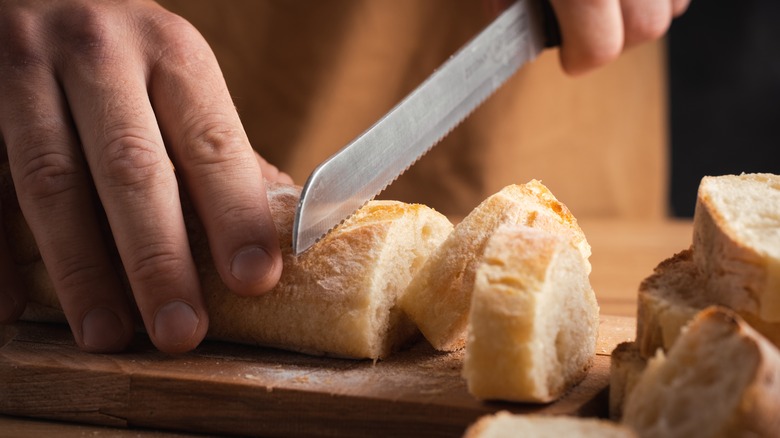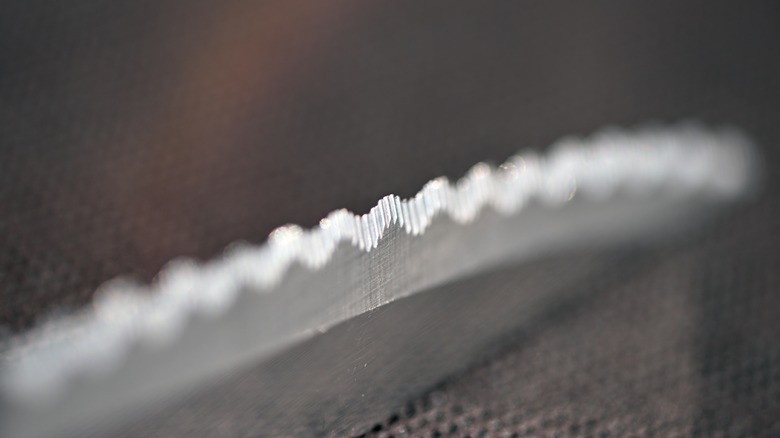The Best Way To Tell If Your Serrated Knife Needs To Be Sharpened
High-quality and sharp knives are undoubtedly the best tools for chefs and home cooks. Prep work like butchering meat, chopping onions, and slicing bread are dependent on a sharp knife. While there are a variety of knives that people gravitate toward using, over 40% of people choose to use a Chef's knife. But according to Misen, a good knife block set will include at least a chef's knife, a paring knife, and a serrated knife.
A chef's knife is beloved because of its versatility. Its 8-inch blade is perfect for chopping everything from carrots to a whole chicken (per Made In). The paring knife, meanwhile, is the trickier knife, with people not always using it correctly, and paring knives are smaller than chef's knives, making them a good choice for more precision work, like deveining shrimp.
Serrated knives are easy to recognize due to their toothlike grooves on the blade. Misen notes that serrated knives are essential to cut through things with thick exteriors, primarily bread. In fact, the knife is colloquially referred to as a "bread knife." And no matter what kind you own, it needs to be sharpened to keep it working well.
Use a piece of bread to test your knife
All knives will eventually dull due to the motion of the blade rubbing against the cutting board. According to Kitchn, the telltale sign that most knives need to be sharpened is to carefully run your fingers on the edge of the blade to see if it feels dull or attempt to cut an onion and see if it slips off. But the shape of a serrated knife makes it more difficult to tell by looking at it if it's dull. So, MasterClass suggests using what it deems as the bread test. To do the bread test, simply take a loaf and bread and use the knife to slice off a piece. When you cut the bread, if you're left with a lot of crumbs, it's time to sharpen the knife.
One thing about serrated knives is you don't want to sharpen them too often. MasterClass explains that because of the shape and the grooves of the blade, the knife doesn't touch the cutting surface as much as other knives. Depending on how often you use a serrated knife, it could go several years without getting sharpened.

